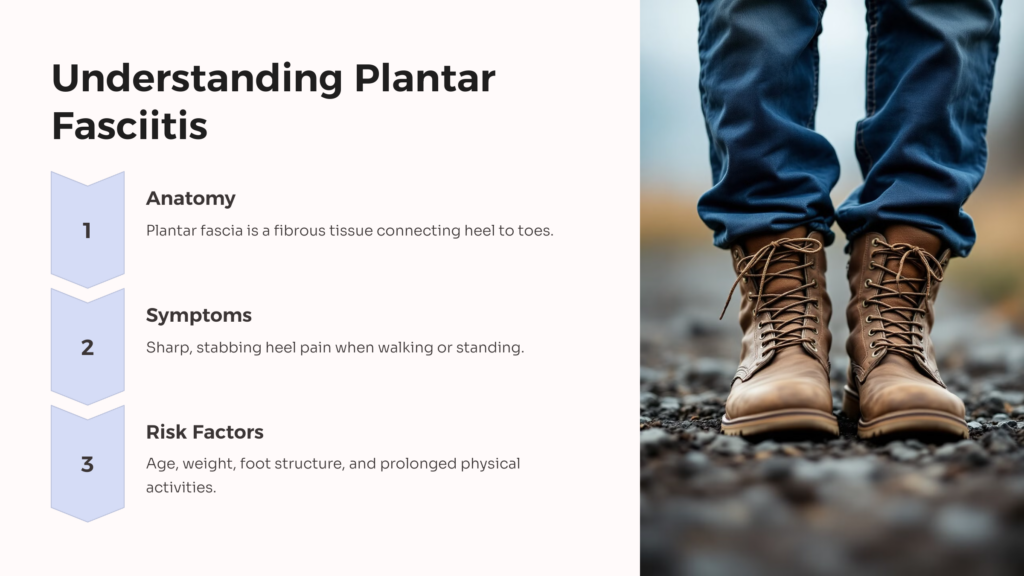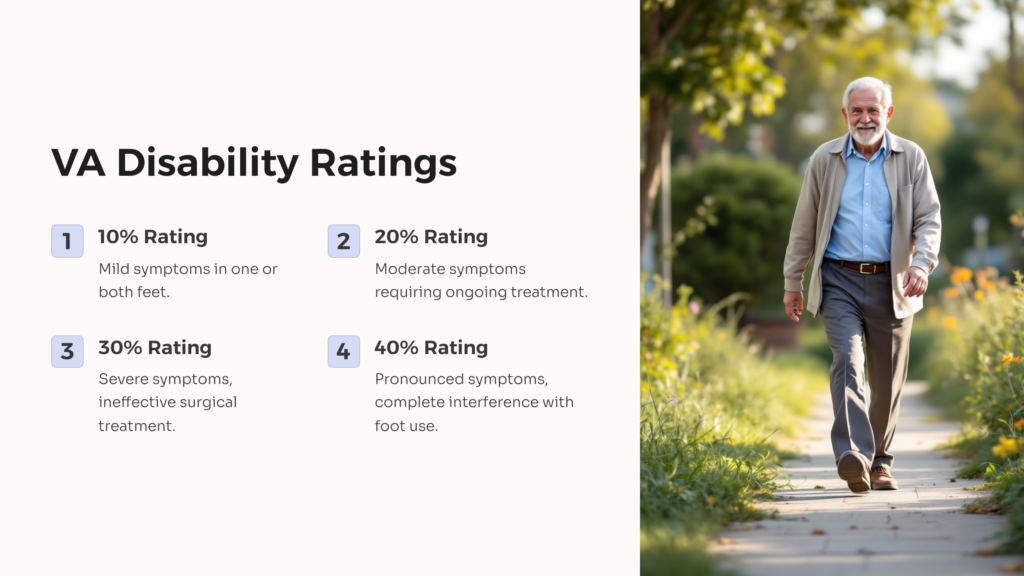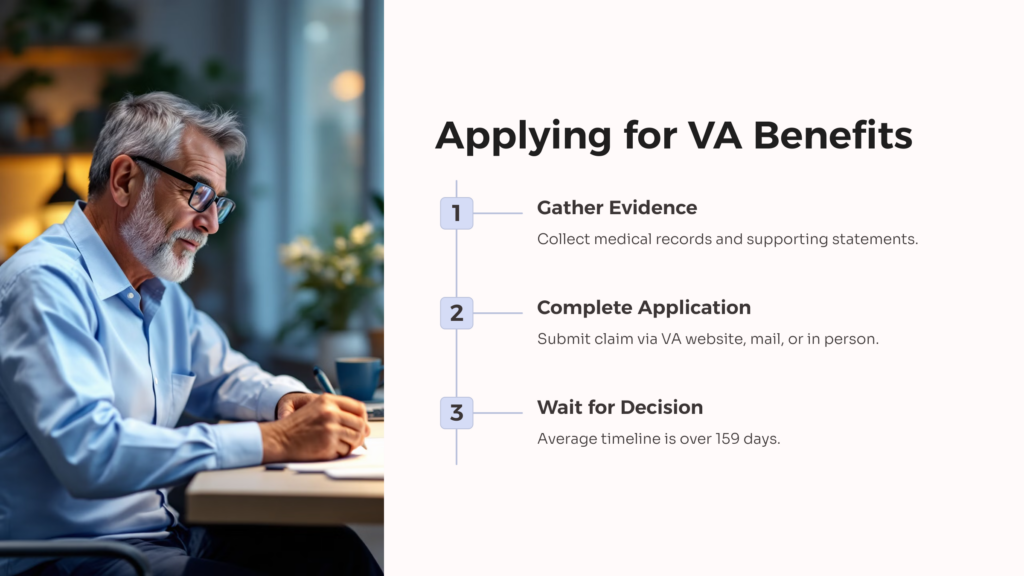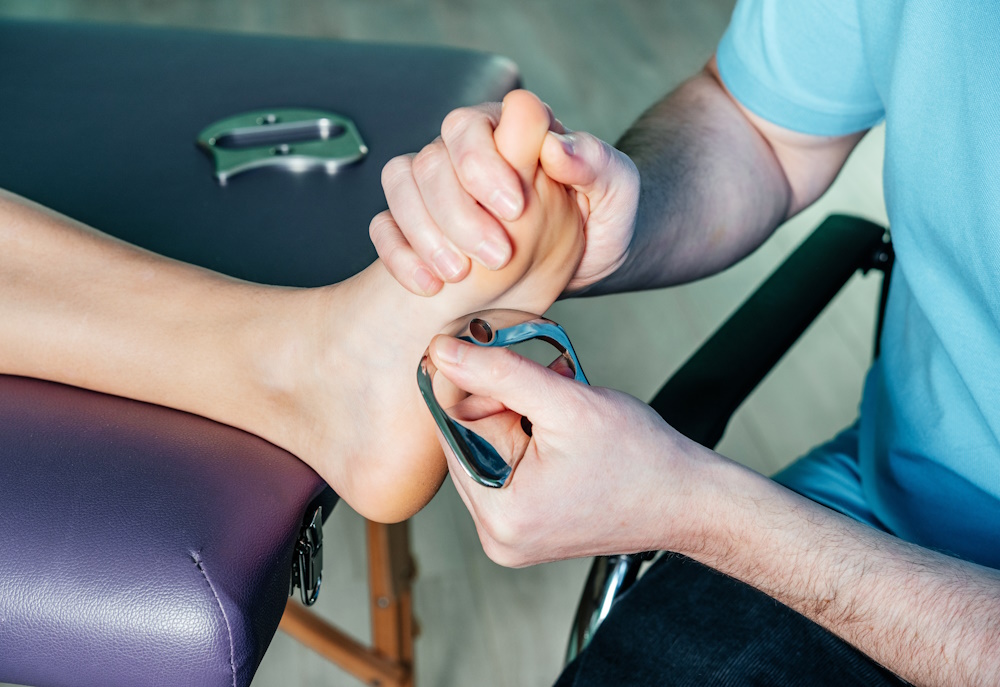Some of the biggest challenges faced by those seeking VA disability benefits are knowing what’s even covered, and knowing how to apply for a qualifying condition. Especially when so many of the physical conditions are less visible, and less obviously connected to service-related activities.
Case in point: plantar fasciitis is characterized by sharp, stabbing pains in the heel of the foot when walking, standing, or supporting weight. It’s entirely possible a vet suffering from plantar fasciitis will attempt to downplay their hardship, and resort to “walking it off,” no pun intended. But it’s a legitimate condition, one that may be a direct result of time in the service, and it can interfere with a veteran’s efforts to sustain employment if left unattended over a long period of time.
Disability and chronic pain isn’t invalid just because they aren’t immediately visible and conspicuous to everyone who sees it. Vets suffering from less obvious conditions are just as deserving of support, treatment, and accommodations. Which is why we put together this brief explanation of plantar fasciitis, how it qualifies for VA benefits, and what steps you’ll need to take to apply.

Overview of Plantar Fasciitis
First, a brief anatomy lesson. On the bottoms of your feet, the bones that make up your heel and the base of your toes (i.e. the “balls of your feet”) are all connected by a sheet of fibrous, tendon-like tissue called the plantar fascia. This tissue is elastic and, much like suspenders hold up a pair of pants, it helps your foot hold its arched shape.
While the plantar fascia is usually quite durable, in some cases it can be overworked or injured. Under the right conditions, these stressors and risk factors can lead to degradation of the tissue, chronic inflammation, and ultimately, the sharp heel pain that characterizes the condition.
Some people are at greater risk of plantar fasciitis than others, In addition to the external factors service members face (walking/running through hazardous terrain, potential physical injuries, and the like), there are a few other noteworthy risk factors, including atypical walking patterns, flat feet, and prolonged physical activities on rough or uneven surfaces.
Individuals who are over the age of 40, overweight, or women, are also at higher risk. Finally, the kind of shoes and footwear you use can either contribute to the risk, or help mitigate it.
Diagnosing the condition can sometimes be challenging, as several other common causes of foot pain have to be ruled out. As such, the diagnostic process involves an exam (usually performed by a podiatrist), and often requires imagine work to definitively determine that the plantar fascia is the cause of the pain.
As for treatment, that will largely depend on the severity of the condition. For patience with less aggressive symptoms, it may simply be a matter of incorporating stretching exercises and standard soft tissue care methods (icing the affected area, physical therapy, anti-inflammatory medication, and so forth).
For those who experience more debilitation with their condition, more extreme treatments may be required. These may include modifying activities that are aggravating the condition, implementing orthotics usage, steroid injections, and even surgery in some cases.
VA Disability for Plantar Fasciitis

Fortunately for those who suffer from plantar fasciitis, and experience the often debilitating pain it can cause, this is a qualifying condition for VA disability benefits. For veterans with an authorized diagnosis, and can demonstrate that the condition is related to their time in the service, disability compensation can be awarded according to the severity of the condition.
VA disability benefits are based on disability ratings—a percentage value that indicates the degree to which a condition interferes with the veteran’s health and independence.
For plantar fasciitis, the VA disability rating may range from 10% to 40%. The rating a veteran receives depends on whether:
- The condition is present in only one foot or in both
- Surgical treatments are required
- Surgical treatments have proven ineffective
- The condition completely interferes with the use of the afflicted foot
The graduated ratings on this condition mean that veterans may be able to secure benefits for their disability while still pursuing treatment, and applying for increased disability ratings as symptoms worsen or treatments prove insufficient to provide relief.
Applying for VA Disability for Plantar Fasciitis

Vets who are ready to begin the claims process for their condition can follow the same application process used for other eligible conditions.
- Gather relevant evidence to support your claim (VA medical records, nexus letters, hospital records, private medical records, and other official documentation of diagnosis and treatment)
- Collect supporting statements, such as those from close family, friends, people you served with, and other associates that can provide further evidence of the condition’s history and escalation
- Complete a claim application and submit it, along with supporting documents, via the VA website, by mail, or by delivering in person
For those who intend to file by fax, mail, or in person, the VA advises first submitting an “intent to file” form, which sets the start date for your benefits while you gather the needed documents and complete the claim itself. If you file electronically, however, this won’t be necessary, as the system will set the initial date for you as part of your filing process.
As a general rule, more supporting evidence is better. The proper documentation can help both with securing the full amount of benefits you qualify for, and in speeding the decision process on the VA’s end. When collecting evidence, be sure to focus on the ways in which the condition was caused, or further aggravated by your time in the service, as this is a critical aspect of the eligibility requirements for benefits.
The Process After the Application

Once you’ve filed your claim, you may find yourself muttering “hurry up and wait” under your breath. The average timeline for receiving a decision on your claim is over 159 days. That number can vary quite a bit based on the number and complexity of the claims you filed, the type of claims involved, and how much legwork is needed on the VA’s end to find the needed evidence.
If you’ve provided enough evidence and documentation, you may not hear anything until you receive a verdict. The VA will notify you if they need any additional information, or need to schedule an exam for you. But unless they do, all you can really do from your end is keep an eye on your mail and your online claim status.
Conclusion
Our feet, like so many things in our lives, tend to go unnoticed until they start giving us issues. But just because a condition is less severe, urgent, or visible doesn’t mean it isn’t disruptive to our daily life and damaging to our quality of life.
If an ER waiting room receives one patient with a life-threatening injury, and one with a broken ankle, both have a right to treatment. One may require more immediate attention, but both are equally deserving of care and assistance. The same is true regarding the myriad of eligible VA disabilities.
A veteran’s time in the service often involves sacrifices and costs that can linger long after they’ve been relieved of their post. Whatever struggles or difficulties that have come home with you, they are just as valid and deserving of the needed support.
That’s why AllVeteran is here to help. Visit our site to learn more.
 AllVeteran.com Advisors
AllVeteran.com Advisors
With expertise spanning local, state, and federal benefit programs, our team is dedicated to guiding individuals towards the perfect program tailored to their unique circumstances.











